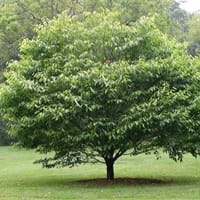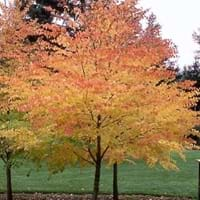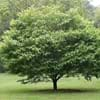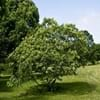Life Span
Perennial
Perennial
Origin
North America, United States, Northeastern United States, Mid-Atlantic United States, Southeastern United States, Central United States, South-Central United States, Texas, Mexico, Europe
Eastern Asia, China, Japan
Types
Carpinus caroliniana caroliniana, Carpinus caroliniana virginiana
Heronswood Globe , Kreukenberg Dwarf
Habitat
Not Available
shaded moist road banks, Wet Woods
USDA Hardiness Zone
3-9
4-8
Sunset Zone
1a, 1b, 2a, 2b, 3a, 3b, 4, 5, 6, 7, 8, 9, 14, 15, 16, 17
2b, 3a, 3b, 4, 5, 6, 14, 15, 16, 18, 19, 20
Habit
Spreading
Oval or Rounded
Flower Color
Yellow, Yellow green
Red, Green
Flower Color Modifier
Bicolor
Bicolor
Fruit Color
Brown
Green, Copper, Sandy Brown
Leaf Color in Spring
Green, Light Green
Purple, Light Green, Bronze
Leaf Color in Summer
Dark Green
Green
Leaf Color in Fall
Yellow, Yellow green, Orange Red
Yellow, Gold, Orange Red
Leaf Color in Winter
Not Available
Not Available
Leaf Shape
Pinnate
Heart-shaped
Plant Season
Summer, Fall
Spring, Summer, Fall, Winter
Sunlight
Full Sun, Partial Sun, Partial shade, Full Shade
Full Sun, Partial Sun
Type of Soil
Clay, Loam
Clay, Loam
The pH of Soil
Acidic, Neutral
Acidic, Neutral
Soil Drainage
Average
Well drained
Bloom Time
Spring
Early Spring
Tolerances
Wet Site
Not Available
Where to Plant?
Ground
Ground
How to Plant?
Not Available
Seedlings, Transplanting
Plant Maintenance
Medium
Medium
Watering Requirements
Requires regular watering
Keep ground moist, Use Mulches to help prevent water loss during hot and windy weather
In Summer
Lots of watering
Lots of watering
In Spring
Moderate
Moderate
In Winter
Average Water
Average Water
Soil pH
Acidic, Neutral
Acidic, Neutral
Soil Type
Clay, Loam
Clay, Loam
Soil Drainage Capacity
Average
Well drained
Sun Exposure
Full Sun, Partial Sun, Partial shade, Full Shade
Full Sun, Partial Sun
Pruning
Requires very little pruning
Prune if you want to improve plant shape, Remove dead branches
Fertilizers
All-Purpose Liquid Fertilizer
All-Purpose Liquid Fertilizer, Apply 10-10-10 amount
Pests and Diseases
Canker, fungus
Bacterial leaf spot, Leafminers, Red blotch
Plant Tolerance
Wet Site
Salt and Soil Compaction, Shade areas, waterlogging
Flowers
Yes
Insignificant
Flower Petal Number
Not Available
Not Available
Fragrant Leaf
Not Available
Yes
Foliage Texture
Medium
Medium
Foliage Sheen
Glossy
Matte
Attracts
Not Available
Birds, Butterflies
Allergy
Not Available
sneezing, Sore eyes
Aesthetic Uses
Showy Purposes, small hedge
Beautification, Cottage Garden
Beauty Benefits
Good for the Scalp, Stops hair loss
Making cosmetics, Skin Problems
Environmental Uses
Air purification
Shadow Tree, soil stabilisation
Medicinal Uses
Anxiety, Bleeding, Cold, Cough, Cuts, Eye Infection, Fatigue, Fights Depression, Insomnia, Menstrual Disorders, Wounds
Not Available
Part of Plant Used
Whole plant
Whole plant
Other Uses
Used as firewood, Used as Ornamental plant, Used for its medicinal properties, Used for woodware
Showy Purposes, Used as Ornamental plant, Used in pulpwood and lumber production
Used As Indoor Plant
No
No
Used As Outdoor Plant
Yes
Yes
Garden Design
Hedges, Screening / Wind Break, Shade Trees, Street Trees
Feature Plant, Shade Trees, Street Trees
Botanical Name
CARPINUS caroliniana
CERCIDIPHYLLUM japonicum
Common Name
American Hornbeam, Musclewood, blue-beech, Ironwood
Katsura Tree
In Hindi
अमेरिकी हानबीन
Cercidiphyllum
In German
Amerikanische Hainbuche
Kuchenbäume
In French
Charme de Caroline
Cercidiphyllum
In Spanish
Carpinus caroliniana
Cercidiphyllum
In Greek
american γαύρο
Cercidiphyllum
In Portuguese
Carpinus caroliniana
Cercidiphyllum
In Polish
Grab amerykański
Grujecznik
In Latin
american hornbeam
Cercidiphyllum
Phylum
Magnoliophyta
Magnoliophyta
Class
Magnoliopsida
Magnoliopsida
Order
Fagales
Hamamelidales
Family
Betulaceae
Cercidiphyllaceae
Genus
Carpinus
Cercidiphyllum
Clade
Angiosperms, Eudicots, Rosids
Angiosperms, Eudicots
Tribe
Not Available
Not Available
Subfamily
Not Available
Not Available
Season and Care of American Hornbeam and Katsura Tree
Season and care of American Hornbeam and Katsura Tree is important to know. While considering everything about American Hornbeam and Katsura Tree Care, growing season is an essential factor. American Hornbeam season is Summer and Fall and Katsura Tree season is Summer and Fall. The type of soil for American Hornbeam is Clay, Loam and for Katsura Tree is Clay, Loam while the PH of soil for American Hornbeam is Acidic, Neutral and for Katsura Tree is Acidic, Neutral.
American Hornbeam and Katsura Tree Physical Information
American Hornbeam and Katsura Tree physical information is very important for comparison. American Hornbeam height is 610.00 cm and width 1,070.00 cm whereas Katsura Tree height is 1,220.00 cm and width 1,220.00 cm. The color specification of American Hornbeam and Katsura Tree are as follows:
American Hornbeam flower color: Yellow and Yellow green
American Hornbeam leaf color: Green and Light Green
Katsura Tree flower color: Red and Green
- Katsura Tree leaf color: Purple, Light Green and Bronze
Care of American Hornbeam and Katsura Tree
Care of American Hornbeam and Katsura Tree include pruning, fertilizers, watering etc. American Hornbeam pruning is done Requires very little pruning and Katsura Tree pruning is done Prune if you want to improve plant shape and Remove dead branches. In summer American Hornbeam needs Lots of watering and in winter, it needs Average Water. Whereas, in summer Katsura Tree needs Lots of watering and in winter, it needs Average Water.





